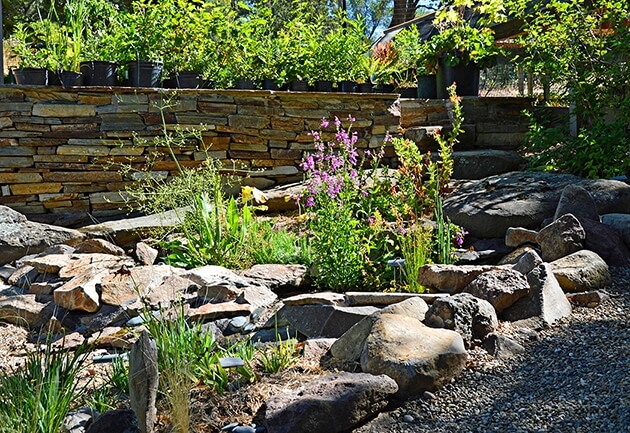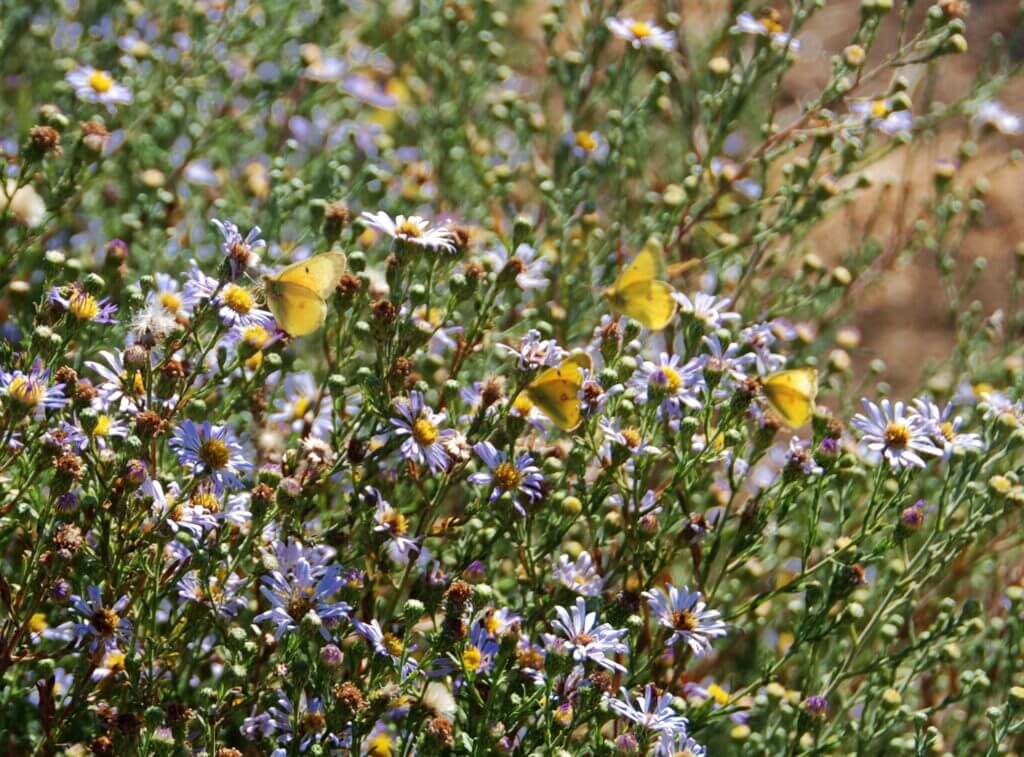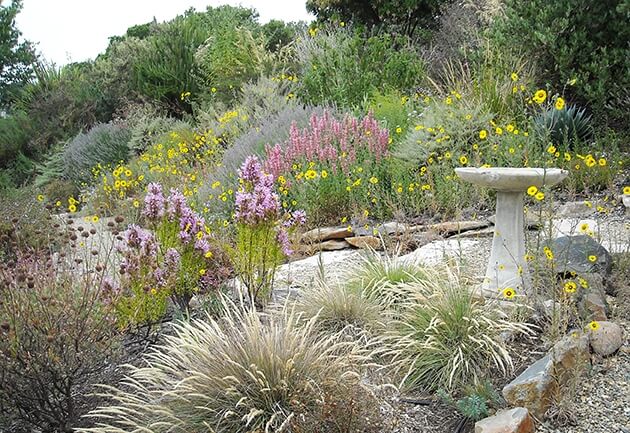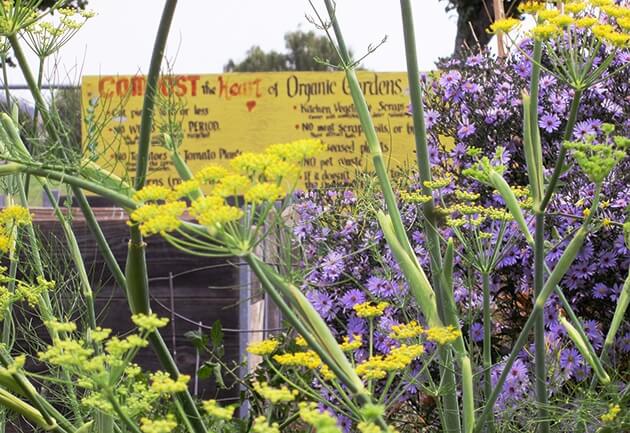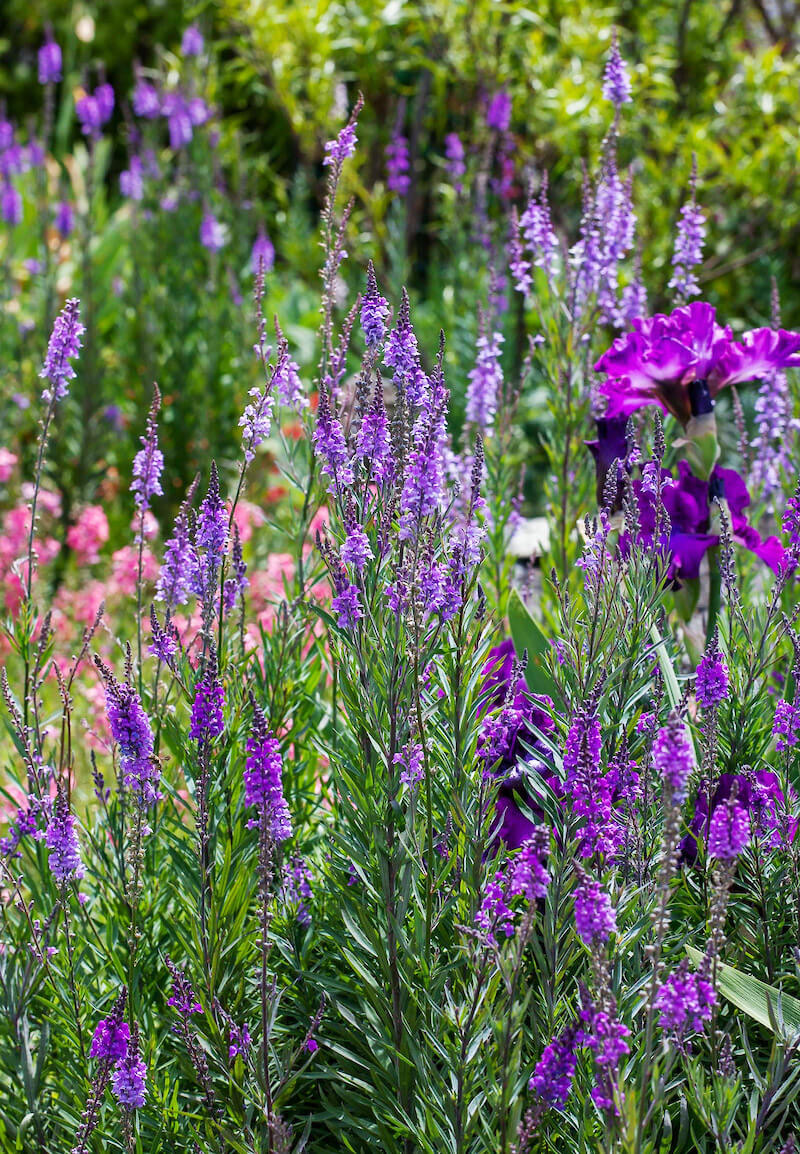Basics of Habitat Gardening
Fundamentally, a habitat garden is designed with a sense of place, building on the local plant community, and preserving and protecting California natives already present. As in nature, the habitat garden incorporates varied layers: trees, shrubs, vines and perennials, California native wildflowers and bunchgrasses. Gardening like this is more than just using a sustainable, organic approach to all the tasks that come with maintaining a garden; it is stewardship of the land, and husbandry of all the natural resources. It is staying tuned into—and respecting—the natural cycles and rhythms of nature.
A basic principle of the natural world is that “life itself creates conditions conducive to life.” The creatures that live here with us have their own ideas about our landscaping and help to create an “amiable disorder” within our gardens. As habitat gardeners, encourage that. As much as possible, become just an editor, allowing volunteer seedlings to grow where they choose.
A habitat gardener always plants for the insects first; creating drifts of flowering plants, and growing a diversity of plants that bloom and set fruits and seeds in different seasons. Non-native habitat plants need to be carefully vetted, especially if you are gardening next to wild lands, to assure that potentially invasive plants are not introduced into the open space lands.
Flowers are allowed to go to seed; larval host plants for local butterfly species are included in the garden, and, in larger gardens, “managed” populations of certain weeds are allowed because they provide good resources for insects, birds and other small creatures. An emphasis is placed on building healthy soil and maintaining a thriving soil food web, as well as recycling plant materials on site as mulch, compost, and brush piles.
Strive to be respectful of all the others that also live here, and be a most benevolent steward of your land. Work to increase the biodiversity and by doing so you provide enhanced resources for all sorts of creatures.

